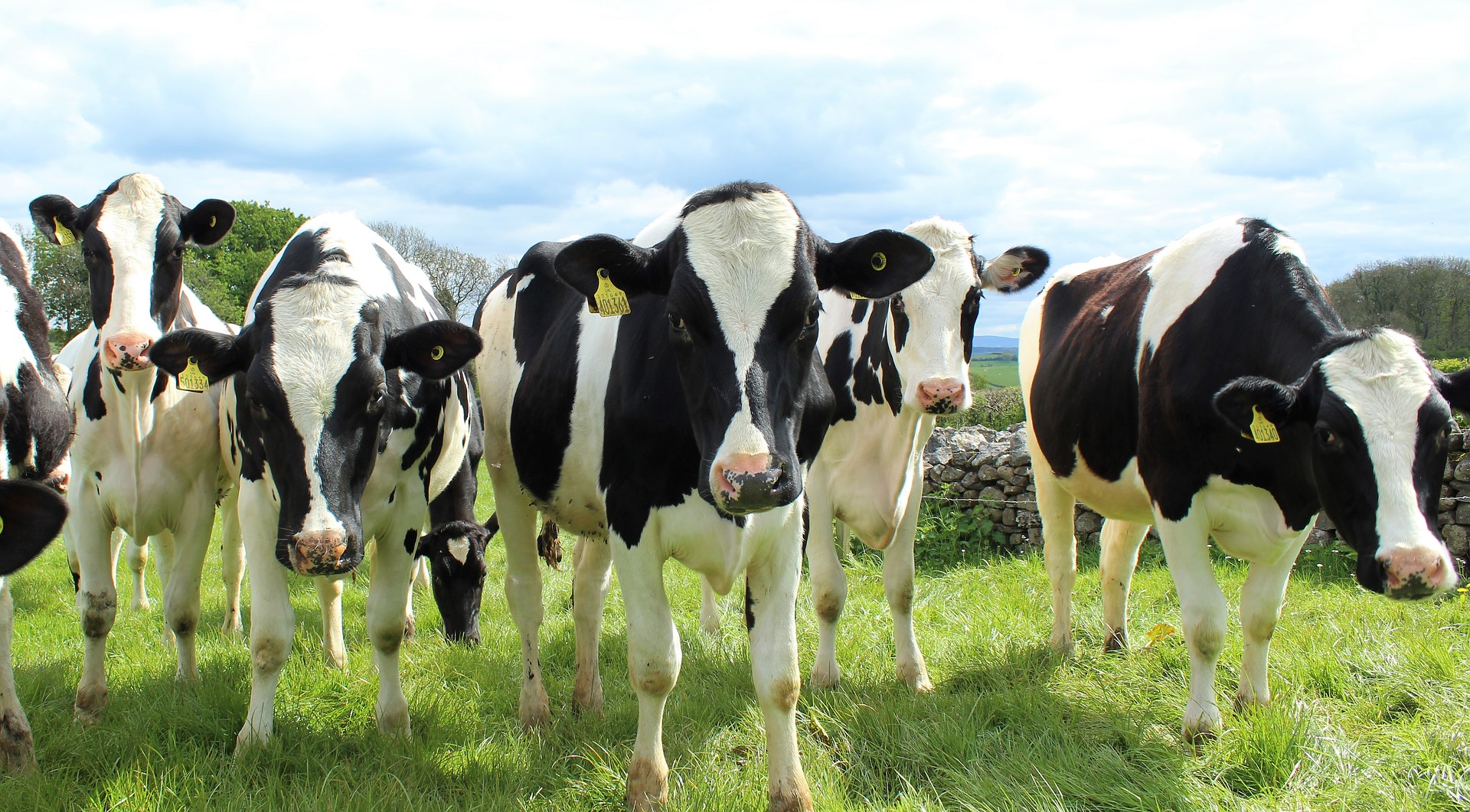To reduce methane emissions, new study finds it necessary to include methane in breeding goals
Researchers from Center for Quantitative Genetics and Genomics (QGG) have participated in an international project, where findings show the necessity of either including methane in the breeding goal, or do it through a correlated trait as residual feed intake, if methane emissions are to be reduced.

Methane is a relatively new trait in genetic studies, and there is not so much information available. The present study is the first study that merges data from four countries to obtain genetic parameters, including correlation with production and maintenance traits. Through a selection index, the merged data will provide the correlated response of several traits already included in the breeding goal. This shows the necessity of including methane in the breeding goal, or include it through a correlated trait as residual feed intake, if we want to reduce the methane emissions.
One way to reduce methane emissions is to select for lower emitting animals using genomic selection. To achieve this, it is necessary to have a large amount of data, currently only possible by combining databases across countries. Therefore, the aim of this study was first to estimate genetic parameters of seven suggested methane traits, as well as genetic correlations between methane traits and production, maintenance and efficiency traits by using a multi-country database. Additionally, it was important to determine which methane trait should be included in the breeding goal. Selection index calculations showed that residual methane had the most potential for inclusion in the breeding goal when compared to methane production, methane yield and methane intensity, as residual methane allows for selection of low methane emitting animals without compromising other economically important traits. Inclusion of feed efficiency in the breeding goal could further reduce methane, as the correlation with residual methane is moderate and elicits a favorable correlated response. Adding a negative economic value for methane could facilitate a substantial reduction in methane emissions whilst maintaining an increase in milk production.
QGG project manager, Coralia Manzanilla Pech, is excited about the project results:
- ‘If we want to reduce methane emissions in dairy cattle, it is time to start taking action, for instance like finding the way of including methane in the breeding goal or in an efficiency index’, she explains.
- ‘However, it is extremely important to continue measuring methane. We need more animals and data records to be able to estimate more accurate parameters, but we are well under way’, she concludes.
The study provides insights on the trait definition for methane across countries and across some related traits, as well as providing insights on the feasibility on merging data across countries. It sets the basis for future methane multi-country analyses and for the discussion on the inclusion of a methane trait in the breeding goal.
---
The project Efficient Dairy Genome Project (EDGP) is a collaboration between Aarhus University (REFFICO, Green Development and Demonstration Program, GUDP, Denmark), and other institutions from 3 different countries: Switzerland (ETH Zurich, AgroVet-Strickhof, Agroscope Posieux), Canada (University of Alberta’s Dairy Research and Technology Center and University of Guelph) and Australia (Agriculture Victoria Research and University of Melbourne).
Breeding for reduced methane emission and feed efficient Holstein cows: an international response. C.I.V. Manzanilla-Pech, P. Løvendahl, D. Mansan Gordo, G.F. Difford, J.E. Pryce, F. Schenkel, S. Wegmann, F. Miglior, T.C. Chud, P.J. Moate, S.R.O. Williams, C.M. Richardson, P. Stothard, J. Lassen. DOI: https://doi.org/10.3168/jds.2020-19889
Study type | Peer reviewed article | |
| Collaborators | The project Efficient Dairy Genome Project (EDGP) is a collaboration between Aarhus University (REFFICO, Green Development and Demonstration Program, GUDP, Denmark), and other institutions from 3 different countries: Switzerland (ETH Zurich, AgroVet-Strickhof, Agroscope Posieux), Canada (University of Alberta’s Dairy Research and Technology Center and University of Guelph) and Australia (Agriculture Victoria Research and University of Melbourne). | |
Funding | This work was partially funded by a grant from the Danish Agricultural Agency, an agency under the Ministry of Environment and Food of Denmark (REFFICO, Green Development and Demonstration Program, GUDP, Denmark) and a grant from the Danish Milk Levy Fund (Aarhus, Denmark) for the project “Reduceret klimaaftryk pa KO-niveau og BEDRIFTS-niveau.” | |
Conflict of interest | The authors have no conflicts of interest to declare. All co-authors have seen and agreed with the contents of the manuscript and there is no financial interest to report. | |
| Breeding for reduced methane emission and feed efficient Holstein cows: an international response. C.I.V. Manzanilla-Pech, P. Løvendahl, D. Mansan Gordo, G.F. Difford, J.E. Pryce, F. Schenkel, S. Wegmann, F. Miglior, T.C. Chud, P.J. Moate, S.R.O. Williams, C.M. Richardson, P. Stothard, J. Lassen. DOI: doi.org/10.3168/jds.2020-19889 | |
Contact | Coralia Manzanilla-Pech // Tel.: +45 8715 4984 Email: coralia.manzanilla@qgg.au.dk |
